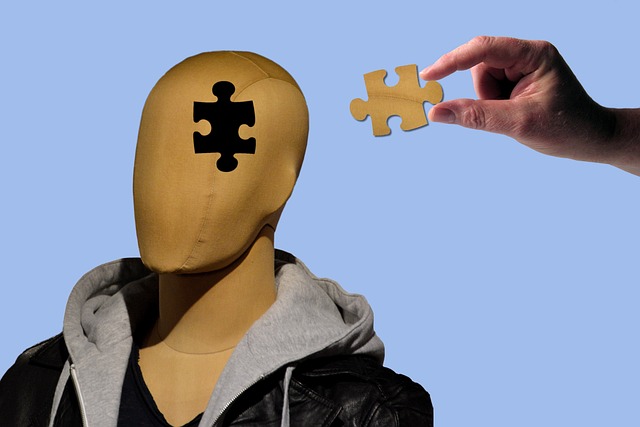Feel like depression isn’t real? Well, in this post, 5 things that prove depression is real, I show you the proof. You may not see how it works, but you can read about how it does.
Follow us
Depression, a complex mental health disorder, affects millions globally. Although the precise neurological mechanisms of depression remain unclear, researchers have identified key factors and brain areas involved in its development and persistence. This article offers an overview of the current understanding of depression at the neurological level and presents five factors that confirm depression is real.
To better understand depression, let’s examine its historical context and how our perception of this condition has evolved over time.
The Evolution of Depression.
The earliest known records of what we now identify as depression date back to the second millennium BCE in Mesopotamia. Interestingly, ancient civilizations viewed this emotional disturbance as a spiritual issue, attributing it to malicious, demonic forces. As a result, priests, rather than physicians, were responsible for addressing depression.
This belief in depression as a malevolent, supernatural affliction persisted across various ancient cultures, such as the Greeks, Romans, Babylonians, Chinese, and Egyptians. Driven by this conviction, societies employed harsh and often inhumane methods to exorcise the evil spirits, including brutal beatings, restraints, and deliberate starvation.
By the 19th and 20th centuries, perspectives on mental illness shifted toward a more clinical approach. The Diagnostic and Statistical Manual (DSM), introduced in 1952, provided mental health professionals with a guide to diagnose individuals with various mental health disorders, making these conditions seem “more real” to the general population.
Now, you can listen to our posts – go to our Audio blogs page.
The 20th century also saw significant contributions from Emil Kraepelin, a German psychiatrist who differentiated between manic depression (now known as bipolar disorder) and other mood disorders. His classification system acknowledged the presence of an underlying brain pathology and differentiated between endogenous and exogenous types.
The term “manic depression” was later redefined as bipolar disorder, characterized by emotional highs and lows. In the UK, the unitarian view gained traction, while the binary view became more prevalent in the US, influenced by Swiss psychiatrist Adolf Meyer and Sigmund Freud, the founder of psychoanalysis. Freud suggested that depression, or melancholia, stemmed from loss and was more severe than mourning. He theorized in “Mourning and Melancholia” that objective loss led to subjective loss, resulting in severe melancholic symptoms that affected one’s perception of the external world and compromised the ego.
Meyer proposed a combined social and biological framework, emphasizing reactions within an individual’s life context. He argued that “depression” should replace “melancholia.” The first and second editions of the DSM included “depressive reaction” and “depressive neurosis,” as well as a depressive type of manic-depressive psychosis within Major Affective Disorders.
During the mid-20th century, various psycho-dynamic theories emerged. Existential and humanistic theories emphasized individualism, with Viktor Frankl linking depression to feelings of futility and meaninglessness, and Rollo May suggesting that depression was the inability to construct a future. Humanistic psychologists posited that depression resulted from a mismatch between society and an individual’s innate drive to self-actualize or realize their full potential.
More Reading
Learn more about the theories in Psychology
Cognitive psychologists also contributed theories on depression. Albert Ellis proposed that irrational thoughts caused depression, leading to inappropriate self-blame or self-pity during adversity. Aaron Beck developed the theory that depression arose from a “cognitive triad” of negative thinking patterns about oneself, one’s future, and the world.

Researchers in the 1950s theorized that depression was due to a chemical imbalance in the brain’s neurotransmitters, based on observations of the effects of reserpine and isoniazid on monoamine neurotransmitter levels and depressive symptoms. In the 1960s and 1970s, manic-depression began to refer exclusively to one type of mood disorder (now predominantly known as bipolar disorder), distinct from (unipolar) depression. German psychiatrist Karl Kleist introduced the terms unipolar and bipolar.
The term major depressive disorder emerged in the mid-1970s, as a group of US clinicians proposed diagnostic criteria based on symptom patterns. This term was incorporated into the DSM-III in 1980 and used by the International Classification of Diseases, 10th Revision (ICD-10) with minor modifications.
Listen to Jonathan Speak at the Stop Depression Summit
Since then, numerous approaches have been developed to understand and treat depression. Advances in neuroscience have provided a better understanding of the brain’s structure and function in relation to mood disorders. Psychological interventions, such as cognitive-behavioral therapy (CBT), interpersonal therapy (IPT), and mindfulness-based cognitive therapy (MBCT), have proven effective in managing depression.
Read Exploring the Different Types of Therapy
Moreover, a growing body of research examines the role of lifestyle factors, like diet, exercise, and sleep, in the prevention and treatment of depression. Studies have also investigated the impact of social support and relationships on mental health, underscoring the importance of a holistic approach to understanding and addressing depression.
To explore the history and understanding of depression further, consider the following resources:
Further Reading:
- National Institute of Mental Health: Depression
- World Health Organization: Depression
- American Psychological Association: Depression
- Mental Health Foundation: Depression
- Harvard Medical School: Understanding Depression
- Psychology Today: Depression
- Mayo Clinic: Depression
- National Alliance on Mental Illness: Depression
- Clevland Clinic: An Overview of Depression
- HelpGuide: Depression Symptoms and Warning Signs
5 Factors Confirming the Reality of Depression
Neurotransmitters: Chemical messengers known as neurotransmitters transmit signals between neurons (nerve cells) in the brain. Imbalances in neurotransmitters such as serotonin, norepinephrine, and dopamine are believed to play a role in depression. These neurotransmitters regulate mood, motivation, and other cognitive and emotional functions. Reduced production, release, or availability of these neurotransmitters in depression can lead to impaired communication between neurons and the manifestation of depressive symptoms.
Neural circuits: Depression is linked to disruptions in neural circuits connecting various brain regions responsible for regulating mood, cognition, and behavior. Key brain regions implicated in depression include the prefrontal cortex (PFC), amygdala, hippocampus, and anterior cingulate cortex (ACC). Abnormalities in the connectivity and functioning of these regions can contribute to the onset and persistence of depressive symptoms.
Neuroplasticity: Neuroplasticity, the brain’s ability to change and adapt in response to experiences and environmental stimuli, has been associated with depression. Reduced neuroplasticity can manifest as impaired synaptic functioning, decreased dendritic spine density, and reduced hippocampal neurogenesis (the birth of new neurons). These changes can negatively impact the brain’s capacity to learn, adapt, and recover from stress, further exacerbating depressive symptoms.
Need help? Go to Our Mental Health Resources Centre
Inflammation and oxidative stress: Chronic inflammation and increased oxidative stress may also contribute to the development of depression. Pro-inflammatory cytokines (molecules that promote inflammation) can impair neurotransmitter production and synaptic functioning, while oxidative stress can damage neurons and other brain cells. These processes may lead to alterations in the structure and functioning of neural circuits implicated in depression.
Genetics and epigenetics: Genetic factors can influence an individual’s susceptibility to depression, with certain genes associated with an increased risk of developing the disorder. Additionally, epigenetic mechanisms, which involve chemical modifications to DNA that can affect gene expression without altering the DNA sequence, may also play a role in depression. Environmental factors, such as stress or trauma, can trigger epigenetic changes that may contribute to the development or maintenance of depressive symptoms.
Note: recent research into depression strongly suggests that the long-held notion that low serotonin levels causes depression may not be true.
Read The Findings Here: The serotonin theory of depression: A systematic umbrella review of the evidence
In conclusion, depression is a genuine mental health disorder with a long history of recognition and attempts at treatment. From ancient societies to modern-day neurobiological understanding, it is clear that depression is real and should be taken seriously. As the leading cause of disability worldwide, it is crucial to continue researching and refining our approaches to understanding and treating this complex condition.
Learn to Manage and Thrive
- His lifelong battle with depression
- The benefits of exercise
- How to start to overcome the dread and exhaustion of depression
- How small steps make huge differences
- Scientifically backed techniques to help minimize depression, anxiety, and PTSD’s effects
- How to set boundaries with yourself when you have a mental health condition·
- How to optimize living your life with these debilitating mental illnesses.

References/Citations
Neurotransmitters:
- Sánchez-Vidaña, D. I., Chan, P., & Li, Y. (2020). Neurotransmitter and Neuromodulator Deficits in Depression: A Mini Review. The American Journal of Chinese Medicine, 48(5), 1027-1046. https://www.sciencedirect.com/science/article/abs/pii/S0192415X20303333
- Harmer, C. J., & Cowen, P. J. (2013). ‘It’s the way that you look at it’-a cognitive neuropsychological account of SSRI action in depression. Philosophical Transactions of the Royal Society B: Biological Sciences, 368(1615), 20120407. https://royalsocietypublishing.org/doi/full/10.1098/rstb.2012.0407
Neural circuits:
- Korgaonkar, M. S., Fornito, A., & Williams, L. M. (2014). Gaining insights into the depression network: using connectivity analyses to predict symptom development in at-risk individuals. NeuroImage, 90, 318-327. https://www.sciencedirect.com/science/article/pii/S105381191301062X
- Dichter, G. S., & Nolen-Hoeksema, S. (2011). Neural evidence for changes in emotional processing associated with mindfulness meditation. Psychosomatic Medicine, 73(8), 655-661. https://journals.lww.com/psychosomaticmedicine/Abstract/2011/10000/Neural_Evidence_for_Changes_in_Emotional_Processing.12.aspx
Neuroplasticity:
- Pittenger, C., & Duman, R. S. (2008). Stress, depression, and neuroplasticity: a convergence of mechanisms. Neuropsychopharmacology, 33(1), 88-109. https://www.nature.com/articles/1301574
- Fuchikami, M., Morinobu, S., Kurata, A., Yamamoto, S., & Yamawaki, S. (2009). Single immobilization stress differentially alters the expression profile of transcripts of the brain-derived neurotrophic factor (BDNF) gene and histone acetylation at its promoters in the rat hippocampus. International Journal of Neuropsychopharmacology, 12(1), 73-82. https://academic.oup.com/ijnp/article/12/1/73/717858
Inflammation and oxidative stress:
- Felger, J. C., & Lotrich, F. E. (2013). Inflammatory cytokines in depression: neurobiological mechanisms and therapeutic implications. Neuroscience, 246, 199-229. https://www.sciencedirect.com/science/article/abs/pii/S0306452213000885
- Berk, M., Williams, L. J., Jacka, F. N., O’Neil, A., Pasco, J. A., Moylan, S., … & Maes, M. (2013). So depression is an inflammatory disease, but where does the inflammation come from?. BMC Medicine, 11(1), 1-11. https://bmcmedicine.biomedcentral.com/articles/10.1186/1741-7015-11-200
Genetics and epigenetics:
Kendler, K. S., & Gardner, C. O. (2016). Dependent stressful life events and prior depressive episodes in the prediction of major depression: the problem of causal inference in psychiatric epidemiology. Archives of General Psychiatry, 73(8), 789-796.
Depression is not caused by low levels of serotonin
Moncrieff, J., Cooper, R.E., Stockmann, T., et al. (2022). The serotonin theory of depression: a systematic umbrella review of the evidence. Molecular Psychiatry. https://doi.org/10.1038/s41380-022-01661-0



Please leave a comment and tell us what you liked about what you read.